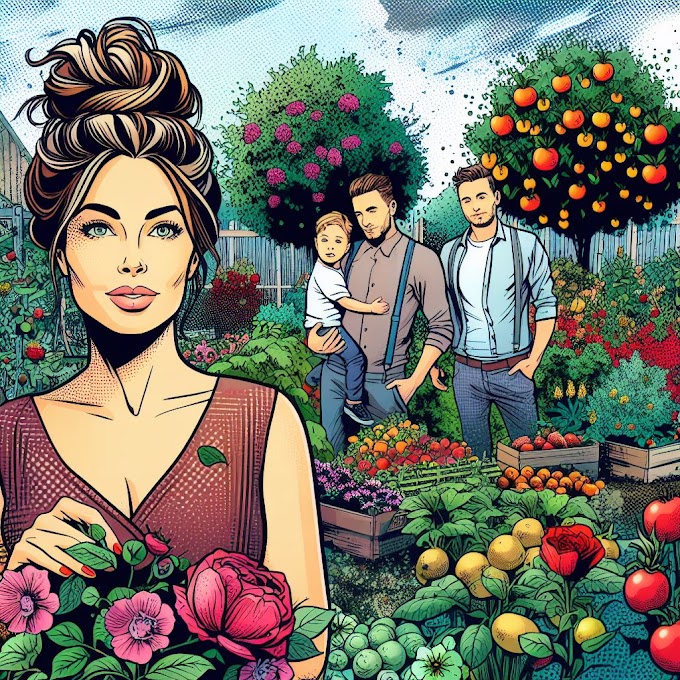Vegetable Gardens 101
Starting a vegetable garden can seem like a daunting task, but with a little knowledge and planning, it can be a rewarding experience. Whether you have a small backyard or a larger plot of land, growing your own vegetables is a great way to save money, eat healthier, and enjoy the satisfaction of nurturing your food from seed to harvest. Let’s break down the basics of vegetable gardening to get you started!
➡ Choosing the Right Location
A successful vegetable garden begins with selecting the right location. Most vegetables need plenty of sunlight—ideally 6 to 8 hours a day. Choose a spot that gets plenty of direct sunlight, away from any large trees or structures that could block the light.
Soil: Vegetables prefer loose, well-drained soil rich in organic matter. If your soil is too sandy or clay-heavy, you can amend it with compost to improve its structure and fertility.
Water: Make sure your garden site is accessible to a reliable water source. Vegetables need consistent moisture to grow properly.
➡ Planning Your Garden
Once you've chosen a location, it’s time to plan your garden. Think about what vegetables you want to grow, how much space you have, and how much time you're willing to invest.
Vegetable Selection: Consider your climate and growing season. Some vegetables, like tomatoes and peppers, need a long growing season, while others, like lettuce and radishes, grow quickly.
Garden Size: Start small if you're a beginner. A 4x4 or 4x8 garden bed is manageable and can yield a variety of vegetables.
➡ Soil Preparation
Before planting, it's essential to prepare your soil. Healthy soil means healthy plants!
Test Your Soil: Use a soil test kit to determine the pH and nutrient levels. Most vegetables prefer slightly acidic soil (pH 6 to 7).
Amend Your Soil: Add compost, manure, or other organic matter to improve soil fertility and structure. This also helps retain moisture and provides nutrients for your plants.
➡ Planting Your Vegetables
Now that your soil is ready, it’s time to plant!
Timing: Different vegetables have different planting times. Some vegetables, like peas, can be planted as early as spring, while others, like tomatoes, should be planted after the last frost.
Seeds vs. Transplants: Some vegetables, such as carrots and lettuce, can be directly sown into the ground. Others, like tomatoes, peppers, and eggplant, should be started indoors and then transplanted into the garden after the last frost.
Spacing: Follow the recommended spacing for each vegetable. Overcrowding plants can lead to poor air circulation, which encourages disease.
➡ Watering Your Garden
Watering is one of the most important aspects of gardening. Too much or too little water can cause plants to wilt, develop diseases, or even die.
Consistent Watering: Aim to water your garden deeply but infrequently. This encourages deep root growth. Water early in the morning to avoid evaporation and fungal diseases.
Mulch: Mulching around your plants helps conserve moisture and reduces weed growth.
➡ Weeding and Pest Control
Weeds compete with your vegetables for water and nutrients, so it’s essential to keep them under control.
Hand Weeding: Use a hoe or your hands to remove weeds regularly. Mulching also helps keep weeds at bay.
Pests: Common garden pests include aphids, slugs, and caterpillars. Use organic methods like neem oil, insecticidal soap, or companion planting to deter pests naturally.
➡ Fertilizing Your Plants
Vegetables need nutrients to grow, and while healthy soil is important, fertilizing your plants helps ensure they get everything they need.
Compost: Use compost to add organic matter and slow-release nutrients to the soil.
Organic Fertilizers: If your soil test shows deficiencies, consider adding organic fertilizers like fish emulsion, bone meal, or blood meal to boost nutrient levels.
➡ Harvesting Your Vegetables
The best part of gardening is harvesting! Make sure you pick your vegetables when they are at their peak for the best flavor and quality.
Timing: Check the maturity date on seed packets or plant labels for guidance on when to harvest. Harvest regularly to encourage more production.
Storage: Some vegetables, like tomatoes and peppers, can be left on the counter, while others, like carrots or cabbage, may need to be refrigerated or stored in a cool, dark place.
➡ Seasonal Care
Gardens change with the seasons, so it’s important to adjust your care accordingly.
Cool-Season Crops: In spring and fall, plant crops that thrive in cooler temperatures, such as spinach, kale, and broccoli.
Warm-Season Crops: In summer, focus on heat-loving vegetables like tomatoes, peppers, and squash.
Overwintering: If you live in a colder climate, consider growing cold-tolerant vegetables or using row covers to extend your growing season.
Tips for Success in Vegetable Gardening
Start small: Don’t overwhelm yourself with a large garden. Start with a manageable plot and expand as you gain experience.
Companion planting: Some plants grow better when planted together. For example, planting basil next to tomatoes can help repel pests and improve flavor.
Rotate crops: To prevent soil depletion and reduce pest buildup, rotate your crops each year. For instance, avoid planting tomatoes in the same spot two years in a row.
With these basics in mind, you're ready to start your vegetable garden. By providing the right environment, planting at the right time, and maintaining your garden with care, you'll enjoy a bountiful harvest of fresh, homegrown vegetables all season long. Happy gardening!







.jpg)








.jpg)

.jpg)

.jpg)


